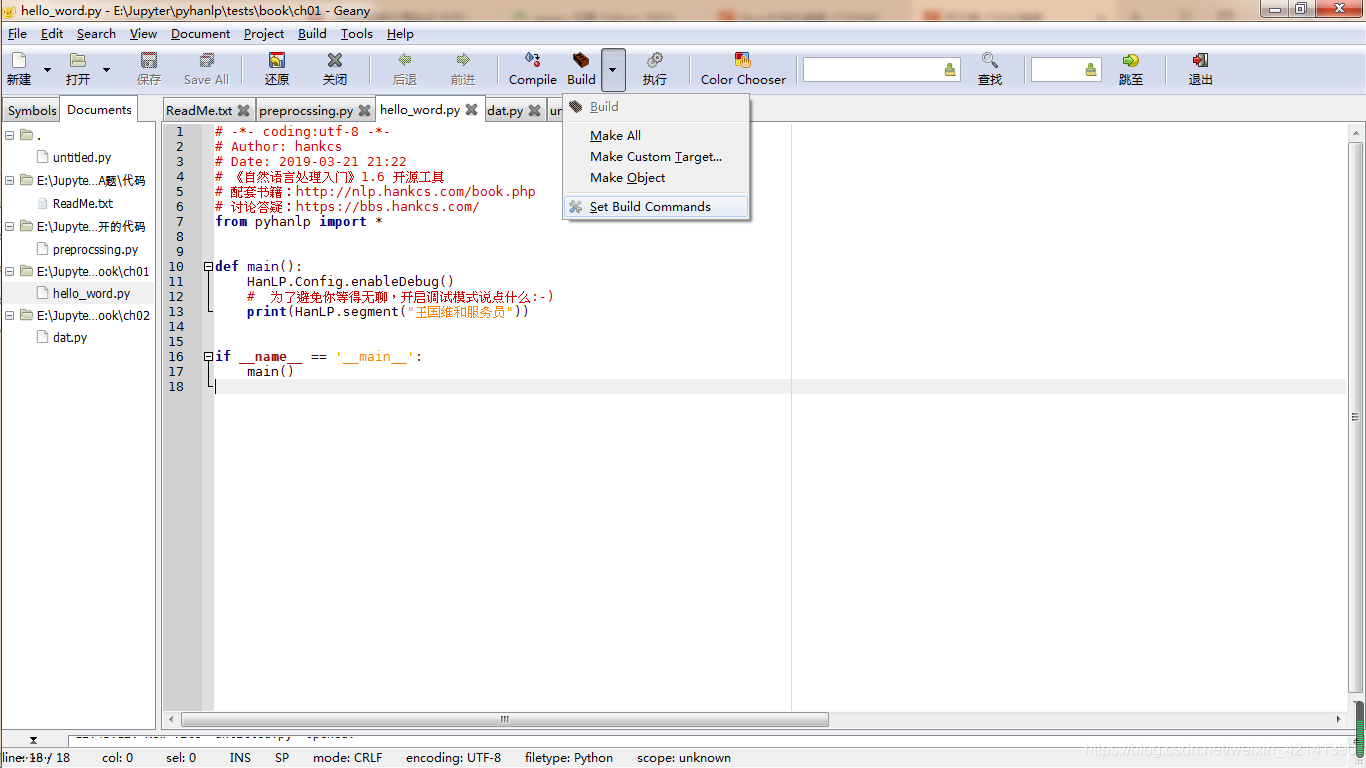Geany 配置 Python
本文共 222 字,大约阅读时间需要 1 分钟。
我的电脑里有两个 Python,一个是平常的 Python,是在 Python 官网上下载的;另一个是在 MiniConda 上带来的。
平时用的是平常的 Python,但有一天想改成 miniconda 的 python,此时就要修改一下了:
首先: Build -> Set Build Conmmands

然后修改 Compile 和 Execute,将 -m 前和 “%f” 前 的 py 改成你想配置的 Python.exe 的路径:

转载地址:http://eqsg.baihongyu.com/
你可能感兴趣的文章
NetApp凭借领先的混合云数据与服务把握数字化转型机遇
查看>>
Netbeans 8.1启动参数配置
查看>>
NetBeans IDE8.0需要JDK1.7及以上版本
查看>>
netbeans生成的maven工程没有web.xml文件 如何新建
查看>>
netcat的端口转发功能的实现
查看>>
netfilter应用场景
查看>>
netlink2.6.32内核实现源码
查看>>
netmiko 自动判断设备类型python_Python netmiko模块的使用
查看>>
NetMizer-日志管理系统 dologin.php SQL注入漏洞复现(XVE-2024-37672)
查看>>
Netpas:不一样的SD-WAN+ 保障网络通讯品质
查看>>
NetScaler的常用配置
查看>>
netsh advfirewall
查看>>
NETSH WINSOCK RESET这条命令的含义和作用?
查看>>
netstat命令用法详解
查看>>
Netstat端口占用情况
查看>>
Netty 4的内存管理:sun.misc.Unsafe
查看>>
Netty channelRegistered\ChannelActive---源码分析
查看>>
Netty WebSocket客户端
查看>>
netty 主要组件+黏包半包+rpc框架+源码透析
查看>>
Netty 异步任务调度与异步线程池
查看>>